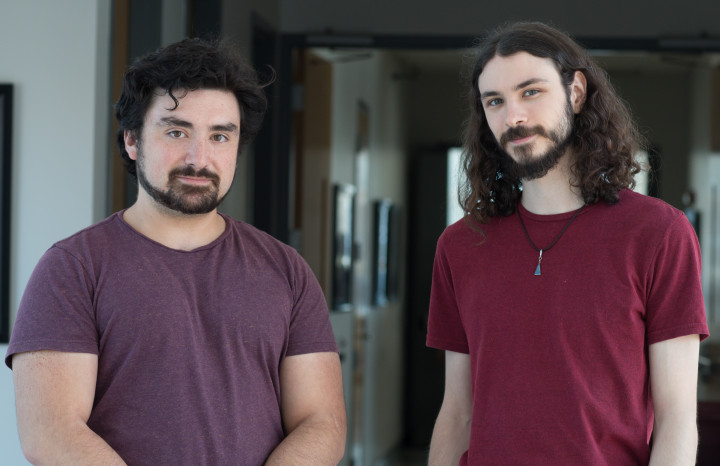Ph.D. students Greg Davis and Matthew Evanusa named COMBINE fellows
Ph.D. students Greg Davis and Matthew Evanusa have been accepted into the 2017 class of the University of Maryland’s COMBINE (Computation and Mathematics for Biological Networks) fellows program. This National Science Foundation-funded Research Traineeship (NRT) program, gives graduate students the opportunity to engage in interdisciplinary research and training in quantitative modeling methods from physics and mathematics with data processing, analysis, and visualization tools from computer science to investigate structural and dynamical principles governing living systems. The program brings together graduate students from Computer Science, Physics, Mathematics, Engineering, and Life Sciences.
Davis is a second-year Ph.D. student who works with Professor Jim Reggia, and Evanusa is a third-year Ph.D. student who works with Professor Yiannis Aloimonos. Both Davis and Evanusa are interested in artificial and biological neural networks and their relationship to each other as well as neuroscience and general artificial intelligence.
Matthew Evanusa cited his interest in reinforcement learning (which he calls “one of the best machine learning techniques, period”), robotics, and the embodiment of active perception as reasons why he joined the COMBINE program. “Big advances in (machine) reinforcement learning and neural networks have come from understanding how the brain works, in particular deep convolutional neural networks. As Jim [Reggia] taught us, a lot of these advancements were inspired from the ways that the visual system processes information backwards. I was very inspired; if we’re getting this much information from by scratching the surface of these [areas of study], there is bound to be a plethora of things to learn from the Neuroscience Community,” Evanusa said. He also emphasized the need for interdisciplinarity and his own desire to learn the academic vocabulary of neuroscience and to serve as a computer science expert who can bridge the two disciplines.
Greg Davis spoke of his interest in self-organization, or the way that biological neurons self-organize and how communication between neurons change over time, and his desire to build models of that communication and those changes as two of his many reasons for becoming a COMBINE fellow. “Artificial Intelligence has run up against this problem for decades of specifying rules and we have realized that to do really, genuinely intelligent things would take an astronomical amount of rules,” he said. The idea is to figure out the rules of the substrate (the material or substance in which an enzyme acts; a layer on which some process occurs). Davis wants to learn how the substrate changes based on its experiences, program the rules for that, and allow AI to change on its own. “It’s sort of the way we teach infants,” he clarified. “I’m not a biologist,” he continued, “even though I learn as much biology as I can, as I am modeling these systems, I’d like to be working with people who understand them better than I do.” Davis also received a substantial scholarship for his work with COMBINE.
“This is a very competitive and prestigious program,” Professor Jim Reggia wrote in an email, noting the talent that both Davis and Evanusa have, and the work that they have done to gain entry into the program.
The Department welcomes comments, suggestions and corrections. Send email to editor [-at-] cs [dot] umd [dot] edu.
